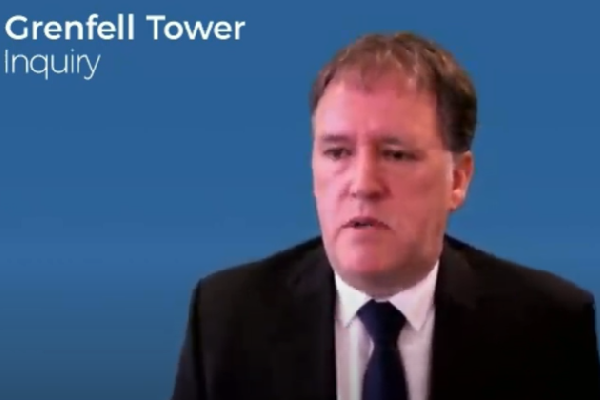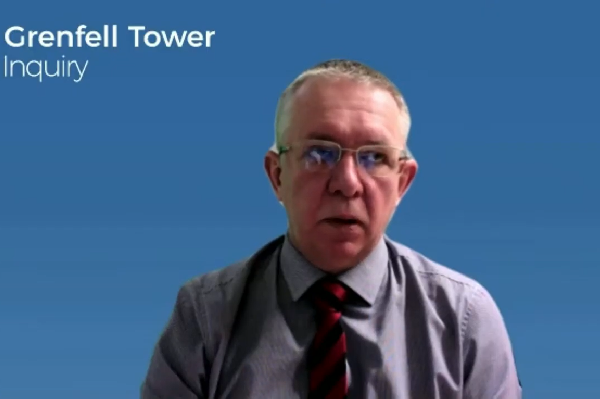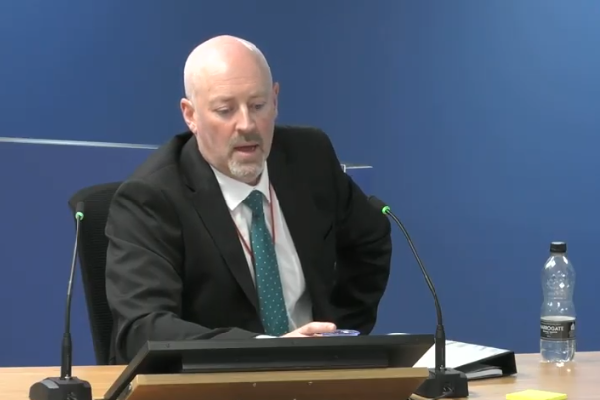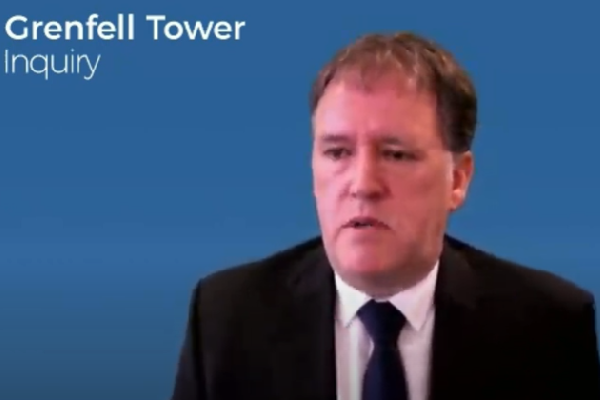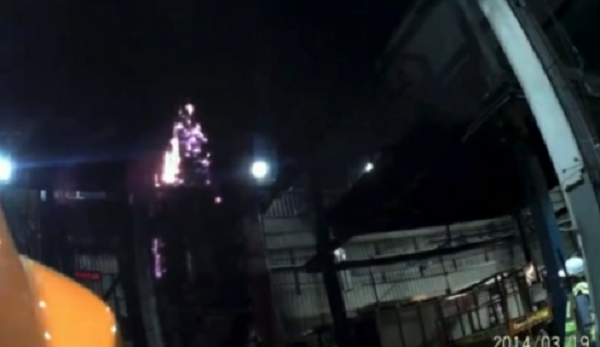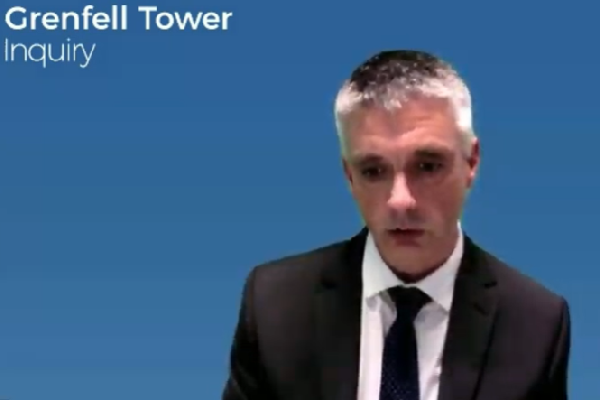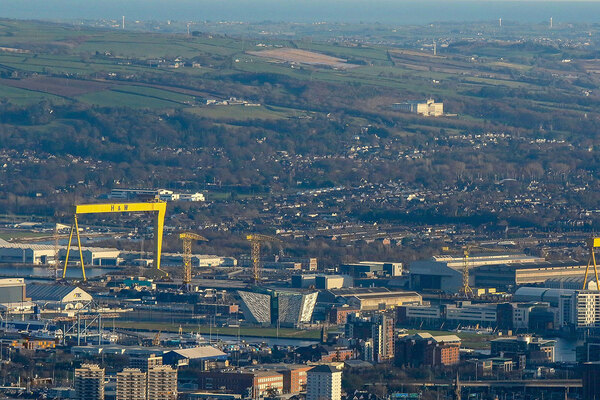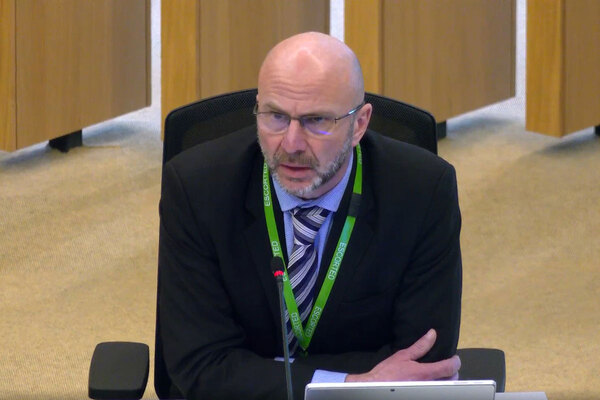Kingspan used BRE report on failed test as basis for 29 desktop studies, Grenfell Tower Inquiry reveals
Kingspan used a failed fire test to help secure 29 reports justifying the use of its combustible insulation on high rise buildings, after the Building Research Establishment (BRE) diverted from its usual practice to provide a written report despite the test failing.
The insulation manufacturer commissioned a test on a system which paired its K15 insulation with high-pressure laminate (HPL) cladding at the BRE facility in March 2014.
Flames spread above the top of the eight metre rig after 43 minutes, which should have resulted in the test being immediately stopped under the official criteria.
But it was allowed to run on and a written report of the test was issued three months later, which Philip Clark, burn hall manager at the BRE, today accepted did “not make it very clear the test has failed”.
This report was then used as evidence by Kingspan to secure 29 desktop assessments, including three written by the BRE, none of which identified the fact that the test had failed, the inquiry heard today.
It came ahead of email evidence later in the day which showed the BRE was warned in 2013 that Kingspan was misusing a separate 2005 test to sell its product for use in a wide variety of cladding systems in buildings above 18m. The insulation was among the products used on Grenfell Tower.
While pre-Grenfell regulations required a system using combustible insulation to pass a test, ‘desktop assessments’ were introduced as a back door to compliance through industry guidance published in 2013.
These are reports written by fire consultants to assess whether or not a system would pass if tested and have been used to justify hundreds of combustible cladding systems on high rises around the country.
“Take it from me that not a single one of those desktop assessments, including the ones done by the BRE, refers to the fact that the March 2014 test failed to meet the BR 135 criteria [which determines pass or failure]. Did you know that?” asked counsel to the inquiry Richard Millett QC.
“I did not know that and I’m surprised… I find that very strange and slightly shocking,” replied Mr Clark.
Giving evidence today, Mr Clark was grilled in detail about his involvement in the March 2014 test, which included video evidence from his helmet camera during the test.
He was shown the British Standard document setting out the test criteria which clearly states the test should be terminated “if flames spread above the test facility”.
He accepted this left “no discretion”, but said it was common practice at the BRE to allow tests to continue to allow clients to get “as much learning as possible” from the test data.
He was then played video footage of the test, which showed the flames breaching the top of the rig 43 minutes into the one-hour test (below).
Mr Clark was recorded saying he was “happy to carry on”. Asked by Ivor Meredith, technical project manager at Kingspan, whether it had failed, Mr Clark replied that he was “on the fence at the moment” and he was “going to let it run”.
When asked, Mr Clark said he knew at this point that the test had failed, but this was just “a polite way” of telling Kingspan he could not confirm this.
He went on to say that “a lesser man might have put that out”.
As he wrote notes recording that the flames had passed the top of the rig, the video records Kingspan's Mr Meredith saying: “Can’t you just delete the whole sentence?”
Mr Clark replied “I will put…” before trailing off.
“It looks from this that you were writing your notes in collaboration with Mr Meredith?” asked Mr Millett.
“There was no collaboration in any way, shape or form,” said Mr Clark, adding that if he had anything to hide he would not have worn his helmet camera.
The test was deemed a failure, but Kingspan lodged a formal complaint seeking to have it reassessed as a pass.
The BRE then agreed to write a report for the test, even though it had not been classified as a pass.
Mr Clark accepted that this was against normal procedure and was shown a 2010 email from his boss, Tony Baker, which noted a specific fear that Kingspan “would try to pass off indicative [reports] as being full tests” if they were issued.
Nonetheless, Mr Clark said he was “told to prepare” a report in this instance and added that he “was very uncomfortable issuing it”.
Asked by Mr Millett if “very great care would need to be taken” to make it clear that the test had failed, Mr Clark agreed. However, he added: “The test report doesn’t necessarily make it very clear unless you read it carefully that the test has failed.”
The only reference to the failure was in a page showing the timeline which said that at 43 minutes, there was “flaming above rig” and this constituted the “end of test”.
In the afternoon session, Mr Clark's former boss, Stephen Howard, business group manager at the BRE, was asked about his response to an email from one of Kingspan's competitors, Celotex, in 2013.
The email said that a critical 2005 test which paired Kingspan insulation with a cement particle board "does not cover the majority of the market in which they are being used".
"We are aware that this product is being used in buildings above 18m using a wide variety of constructions, some on to masonry, some onto steel frame, with ACM panel cladding, terracotta, etc," the email said. "We are surprised they feel confident enough to allow their product to be used in buildings their fire test doesn't cover."
Asked what he did when he received the email, Mr Howard said he had asked Mr Roper for more information but was unable to act without receiving it.
The 2005 test was not given an official pass/fail classification report until 2015 when Kingspan, under pressure from building control inspectors belatedly sought one from the BRE.
The inquiry saw that one of Mr Howard's colleagues, Tony Baker, due to give evidence next week, was initially reluctant to provide one, writing: "I doubt this would be considered a complete system. Data such as this has been misrepresented in the market in the past."
However, Mr Howard instructed a junior colleague to prepare a draft anyway, which was then issued to Kingspan.
He said he disagreed with Mr Baker's assessment as the original test had not been marked as indicative and it was not up to the BRE to make judgements about the suitability of the system in the real world.
The inquiry continues with further evidence from Mr Howard next week.
Sign up for our weekly Grenfell Inquiry newsletter
Each week we send out a newsletter rounding up the key news from the Grenfell Inquiry, along with the headlines from the week
Already have an account? Click here to manage your newsletters
